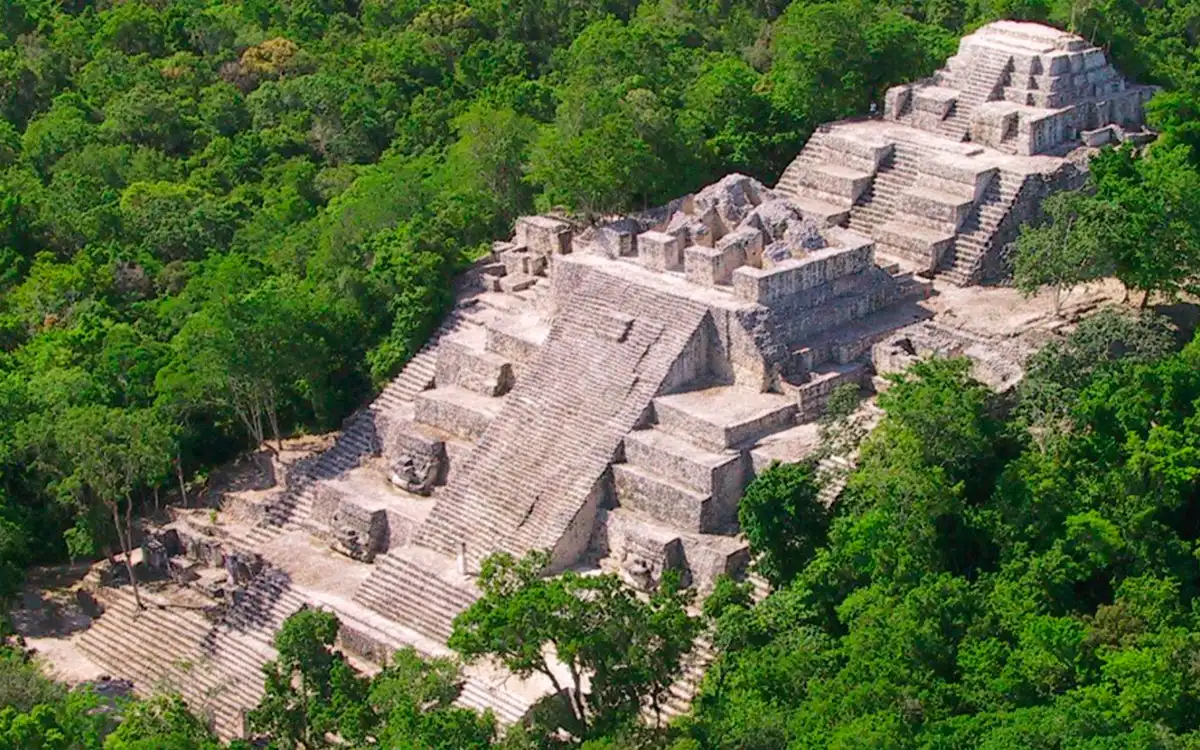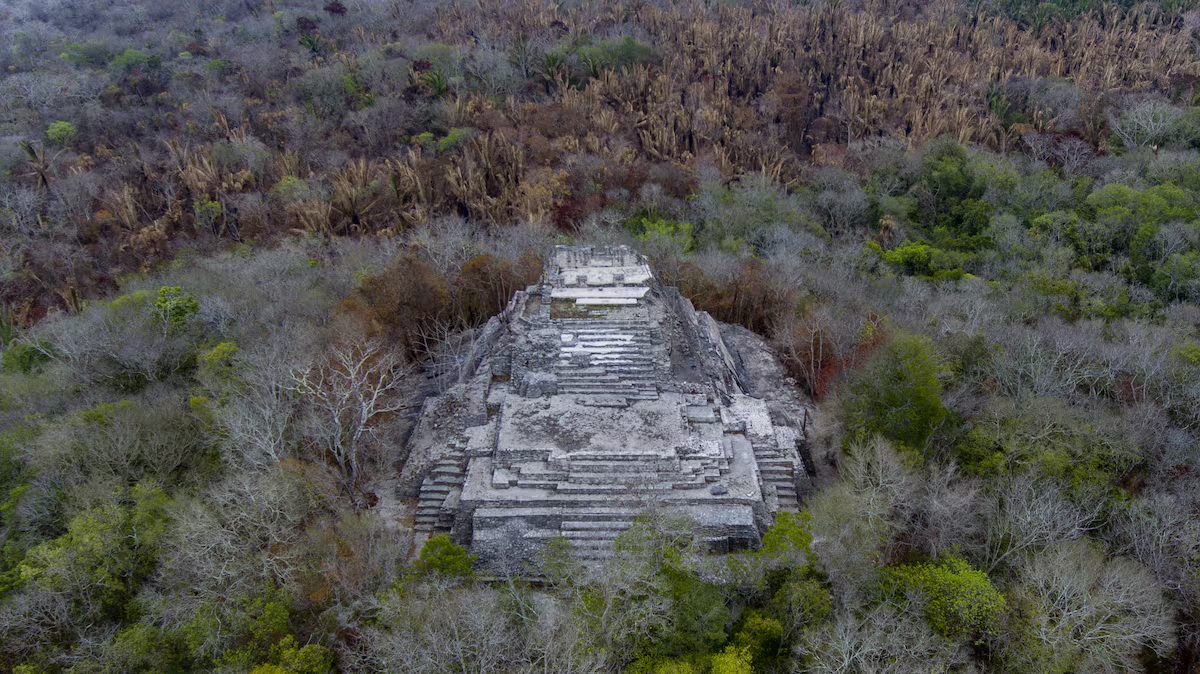 The Yucatán Peninsula is renowned for its rich history and majestic ruins, with Chichen Itzá standing as one of the most famous archaeological sites in the world. However, there’s a new archaeological wonder in Quintana Roo that’s about to make headlines—Ichkabal. The Ichkabal ruins are set to open in September, offering a fresh perspective on the ancient Mayan civilization. Located near Bacalar, Ichkabal is a significant addition to the region's cultural heritage, promising to captivate both historians and tourists alike.
The Yucatán Peninsula is renowned for its rich history and majestic ruins, with Chichen Itzá standing as one of the most famous archaeological sites in the world. However, there’s a new archaeological wonder in Quintana Roo that’s about to make headlines—Ichkabal. The Ichkabal ruins are set to open in September, offering a fresh perspective on the ancient Mayan civilization. Located near Bacalar, Ichkabal is a significant addition to the region's cultural heritage, promising to captivate both historians and tourists alike.
The discovery and upcoming opening of Ichkabal is a monumental event for the study of Mayan history. Ichkabal, which means "between low places" in Mayan, is poised to reveal many secrets of this ancient civilization. The site was initially discovered in 1995, but it has taken decades of research, exploration, and preparation to make it accessible to the public.
What makes Ichkabal particularly fascinating is the scale of its structures. Archaeologists have uncovered massive pyramids and temples that, in some cases, surpass the size of those at Chichen Itzá. This has led experts to believe that Ichkabal was once a political and cultural powerhouse in the region, possibly even serving as a major city during its peak.
 The Ichkabal ruins are located deep within the jungle, near the picturesque town of Bacalar, famous for its stunning lagoon. The remoteness of the site has helped preserve it over the centuries, but it also means that visiting Ichkabal is an adventure in itself. Visitors will be able to explore vast plazas, towering pyramids, and intricately designed temples that have been hidden from the world for over a thousand years.
The Ichkabal ruins are located deep within the jungle, near the picturesque town of Bacalar, famous for its stunning lagoon. The remoteness of the site has helped preserve it over the centuries, but it also means that visiting Ichkabal is an adventure in itself. Visitors will be able to explore vast plazas, towering pyramids, and intricately designed temples that have been hidden from the world for over a thousand years.
One of the most striking features of Ichkabal is the sheer size of its main pyramid, which stands at an impressive 40 meters tall. This makes it one of the tallest Mayan pyramids in the region. The complex also includes several other large structures, suggesting that Ichkabal was a center of significant economic and political activity.
Ichkabal is expected to offer visitors a unique experience, distinct from other well-known sites like Chichen Itzá. While Chichen Itzá dazzles with its iconic El Castillo Pyramid and the famed Great Ball Court, Ichkabal provides an opportunity to explore a site that is still largely shrouded in mystery, with much yet to be uncovered.
While the discovery of Ichkabal has generated excitement, it's important to emphasize that it doesn’t compete with Chichen Itzá, but rather complements it. Chichen Itzá is a UNESCO World Heritage site, recognized globally for its historical significance and breathtaking architecture. It continues to attract millions of visitors each year, serving as an essential destination for anyone interested in Mayan culture.
Ichkabal, on the other hand, offers a more intimate and less crowded experience. It’s a site for those looking to dive deeper into the Mayan world, beyond the more commonly visited locations. Together, Chichen Itzá and Ichkabal paint a broader picture of the Mayan civilization, showcasing its diversity and the regional variations in architecture and culture.
For visitors already planning a trip to Chichen Itzá, adding Ichkabal to their itinerary could provide a fuller understanding of the Mayan empire's scope and influence. The two sites together offer a complementary journey through time, revealing different facets of this ancient society.
The Ichkabal ruins are set to be a major draw for tourists and scholars alike. Given the site’s relatively untouched state, it offers a raw and authentic glimpse into the past. Visitors can expect a more adventurous experience compared to the well-established trails at Chichen Itzá. Guided tours will be available to help visitors navigate the expansive site and provide context to the impressive structures.
Since the site is nestled within a dense jungle, visitors should be prepared for a bit of hiking. The pathways leading to the ruins are surrounded by lush vegetation, and the sounds of the jungle create a serene atmosphere, making the exploration even more captivating.
The Mexican government, alongside local authorities, has worked diligently to make Ichkabal accessible while preserving its integrity. This balance between accessibility and conservation ensures that future generations will be able to appreciate this historical treasure.
The opening of the Ichkabal ruins marks a significant milestone in the ongoing exploration of Mayan history. As more structures are unearthed and studied, historians anticipate that Ichkabal will offer new insights into the political dynamics, trade networks, and cultural practices of the ancient Maya.
The site is expected to play a crucial role in the local economy as well, attracting tourists to the Bacalar area and promoting sustainable tourism practices. The influx of visitors to Ichkabal will likely benefit the surrounding communities, providing opportunities for local businesses and boosting the region’s profile on the global stage.
As the Ichkabal ruins prepare to open to the public, they offer a tantalizing glimpse into a lesser-known chapter of Mayan history. This new site, with its towering pyramids and expansive plazas, promises to be a highlight for anyone interested in ancient civilizations. While Chichen Itzá remains a must-see destination, Ichkabal presents an exciting new option for those eager to explore the depths of Mayan culture. Together, these two sites provide a rich and complementary experience, showcasing the grandeur and complexity of the ancient Maya in all its glory.
Whether you’re a history enthusiast, an adventurer, or simply a curious traveler, Ichkabal is set to be one of the most intriguing destinations in the Yucatán Peninsula. Make sure to add it to your travel list and be among the first to explore this remarkable new chapter in Mayan archaeology.